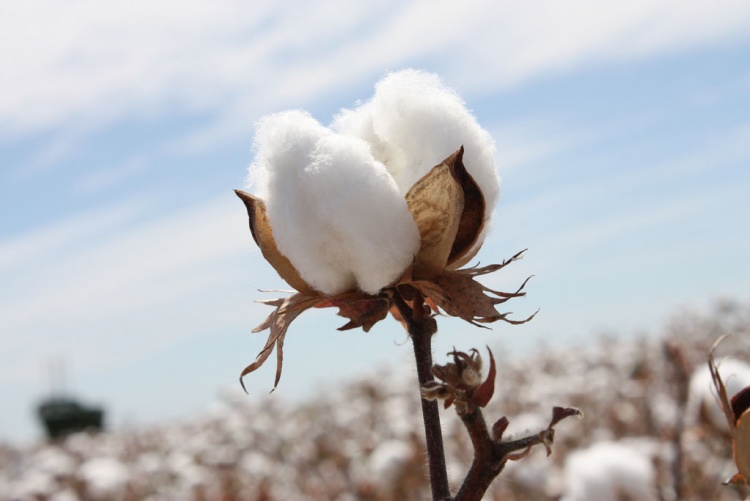Background
Cotton has long been used by populations in the northern part of Côte d’Ivoire for their craft. Its production, on an industrial scale, was undertaken around 1900 by French spinners who operated from Bouaké, in the center of Côte d’Ivoire.
In 1962, with the support of the French Company for the Development of Textile Fibers (CFDT/Compagnie Française pour le Développement des Fibres Textiles), the Government of Côte d'Ivoire decided to develop the cultivation of cotton in the northern and central regions, with the aim of diversifying export products and reducing income disparities between the southern forest areas and the northern or eastern savannah regions.
In 1974, CIDT (Compagnie Ivoirienne pour le Développement des Textiles) was created as a State-owned monopoly. In 1988, the sector was partially privatized and finally liberalized in 1998, to allow the participation of private corporations.
Following the adverse effects of the 2002 political and military crisis on the northern regions, the Government undertook a 21 billion CFA Franc recovery plan in 2008, with the help of financial partners. September 2013 saw the adoption of a major structural reform program that establishes, since December 2016, an agro-industrial zoning policy (allocation of specific zones to different companies).
Furthermore, the Conseil du Coton et de l’Anacarde (Cotton and Cashew Board) acts as the agency responsible for the regulation, monitoring and development of the cotton sector.
Importance of cotton in the economy:
Cotton contributes to the agro-industrial and social development of the central and northern areas of the country. It is the livelihoods of 3.5 million inhabitants (directly and indirectly).
Cotton is now the fourth agricultural export product after cocoa, natural rubber and cashew nuts. It generates 7% of export revenues and represents 1.7% of Gross Domestic Production with a turnover of 100 billion CFA Francs.
Production
Cotton is produced in 16 regions: Bagoué, Bafing, Bere, Folon, Kabadougou, Poro, Worodougou, Tchologo, Hambol, Bounkani, Iffou, Gbeke, Marahoué, Haut-Sassandra, Yamoussoukro, Goh. Poro, Tchologo and Bere represent the largest producing zones with more than 50,000 tons of cottonseed each. These areas make up 58% of the national territory.
The land surface used for the cultivation of cotton currently stands at 344,629 ha for a total cotton seed production of 328,090 tons in 2016/17, following a small dip from the record production of 2014/15 which stood at 450,093 tons.
Côte d’Ivoire is thus the third biggest African producer of cotton, after Burkina Faso and Mali. Globally, Côte d’Ivoire is between the 12th and 14th largest cotton producing country.
Three modes of culture are used in the production of cotton: manual cultivation, animal-drawn farming, and motorized production. Cotton is often grown in rotation with maize, rice and groundnuts.
Producers
Cotton production is essentially the work of small-scale farmers on modest family farms of between 1 to 7ha (the average size being 3ha). However, some growers own bigger farms of 20 to 30ha. 96,106 smallholders were registered as cotton farmers in 2016/17.
The latter are organized in cooperative groups which are responsible for producing, collecting and marketing cottonseed. Cooperatives also manage credit on behalf of farmers and look after their interests.
Tonnage/ performance
In 1999-2000, cottonseed production in Côte d'Ivoire was around 400,000 tons with yields of 1400kg/ha. However, due to the negative impact of the 2002 political crisis on the northern regions, Côte d’Ivoire’s performance fell to 174,677 tons by 2010/2011. Production rose again to 405,226 tons in 2013/14 but yields were only of 1,100kg/ha, which is below yields for 2000/2001 and well below the level of performance expected for these varieties (2500 to 3000kg/ha).
Moreover, following a record volume of 450,093 tons in 2014/15, production fell sharply to 307,177 tons in 2015/16 due to a low yield of 764kg/ha. However, a production of 328,090 tons for 2016/17 indicates a recovery of the cotton sector.
Varieties
The cotton variety produced in Côte d’Ivoire is Gossypium Hirsutum.
Commercialization System
Starting from the 2017/18 campaign, the Government will implement a new price setting mechanism which is supported by a fonds de lissage (buffer fund), in order to allow a fair distribution of revenues between producers and ginners and a more efficient management of price risks.
Markets
Exports of Ivorian cotton fiber are mainly towards Malaysia, Vietnam, Bangladesh, Indonesia and India (89.51% of export markets according to the latest figures by the Cotton and Cashew Board). Europe and the West African sub-region receive respectively 6.77% and 3.70% of our cotton exports. Less than 1% of the national production is used for the domestic spinning and weaving industry.
Local Processing
The domestic processing industry is made up of 15 ginning plants which are owned by six different companies for a total ginning capacity of 615,000 tons of cottonseed (250,000 tons of cotton fiber potential).
Three modern spinning/weaving units are also located in the cities of Dimbroko, Agboville and Bouaké. Together, they hold a total processing capacity of 20,000 tons of fiber cotton. The downstream market is represented by companies specialized in the manufacturing of printed textiles.
Finally, there are two modern crushing units which are located in Bouaké and Korhogo; they respectively hold a crushing capacity of 200,000 and 100,000 tons of cottonseed. These units produce cooking oil and cottonseed meal (cotton husks) for animal feed.
Current constraints
- More than 60% of cotton production occurs via animal-drawn techniques
- Low productivity
- Inconsistent supply of raw material to processing and manufacturing units
- High cost of inputs
Challenges and opportunities
- Take productivity beyond 2000/2001 levels of 1400kg/ha
- Modernize the Ivorian cotton sector
- Establish a reliable mechanism for the provision of inputs
- Promote processing and transformation (including textile industry)
- Exceed the current crushing rate of 28 % of cottonseed production
- Find new financial and technical partners

